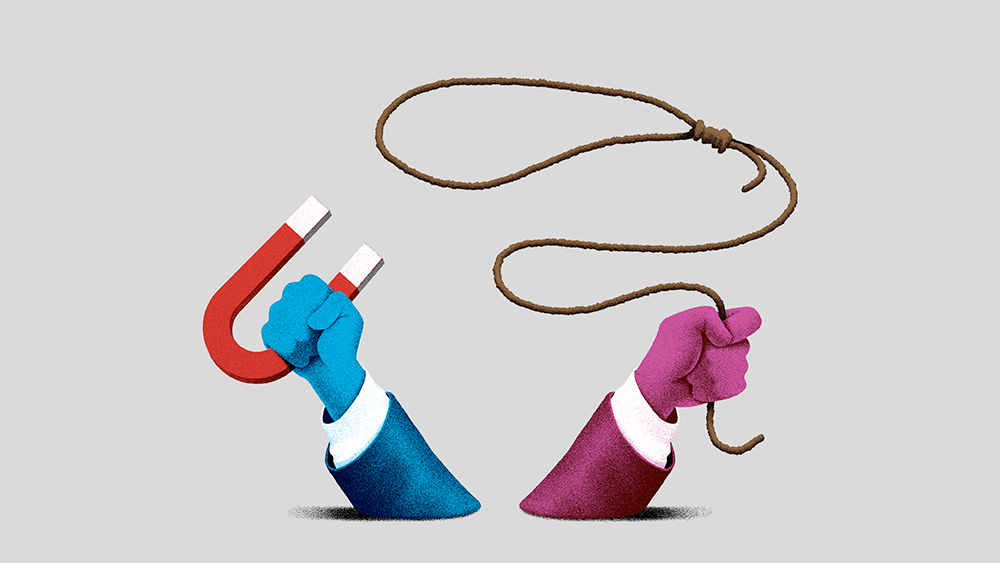CROs: Are Your Sellers Persuading or Influencing?
6.8 minutes read

What is persuasion resistance?
Persuasion resistance in buyers is closely related to the concept of ‘Discovery Resistance’ I’ve written about and discussed extensively. When selling, Discovery Resistance is the distrust or pushback from potential buyers when salespeople try to engage them in diagnostic conversations about their current challenges or pain points. This resistance is often a result of negative personal experiences with “persuading” salespeople where, as buyers, they felt pushed, coerced, or manipulated into doing something they weren’t ready to do. Additionally, when most people feel sellers are using persuasion ‘techniques,’ these behaviors can easily backfire and cause distrust.
When I think about the concept of ‘persuasion resistance,’ it would mean a similar pushback or reluctance you feel, but this time against attempts by other human beings to persuade you to do something through reasoning, convincing logic, or argument. Conversely, if our intent is to influence another person, we want to get them to do something because they choose to do so. If we turn on our EQ antennae, we can start to notice the many ‘oppositional’ people we experience daily. If you have an oppositional personality in your life regularly, you are experiencing a high level of persuasion resistance. Just like discovery resistance, persuasion resistance can result from past negative experiences. Overcoming persuasion resistance, like overcoming discovery resistance, usually involves building trust and improving connection before attempting ‘intelligent discovery’ of that person’s needs or pain points.
If, when selling, you bypass the first stage of a buying cycle (curiosity), the odds are your efforts to ‘influence’ will elicit persuasion resistance. The best way to influence new potential buyers is to offer, get permission to share, and tell a peer story. First, get them curious to hear a peer’s story. A good peer story will lead your buyer to some emotional conclusions – this person understands how difficult my job is and has helped one of my peers solve a problem or achieve a goal. A well-crafted, well-delivered peer story can convert peer curiosity to peer envy. A buyer with peer envy that you had a hand in creating can become willing to be influenced.
The primary difference between persuasion and influence is intent.
Boston College Marketing Professor John Westman is leading a movement to raise the public esteem of sales as an honorable profession. The issue is that despite their personal noble intentions, most B2B sellers manifest their CRO’s selling model. Suppose the CRO’s selling model is convincing people to buy on their schedule despite the honorable intent of frontline sellers? In that case, their sellers will manifest the “pushing” selling model of their CRO. On the receiving end, there is a big difference for buyers between sellers trying to convince them to buy something and someone trying to connect with them, gain their trust, and inspire them to do something. From many buyers’ perspectives, the concept of persuasion is often associated with traditional sales methods, which aim to convince, overcome objections, and get them to make a purchase. It’s generally a one-way “presentation” where the seller intends to get their customer to buy. Most potential buyers can feel when the seller’s intent is on the objective of closing a sale.
Conversely, influence is more about creating a relationship based on trust and mutual understanding – more conversational and less authoritative. When the seller’s mindset is to influence, their intent is to empower their buyer to achieve their goals or solve their problems. Influencing sellers want to make their customers more successful. Influencing sellers will only move forward with win-win agreements. Influence is a “pull” approach, while persuasion is a “push” approach. If B2B sellers are “pushing” their buyers, blame it on their CRO.
Influence is not just about making sales; the ability to influence is a life skill. Influence is about educating, inspiring, and motivating another human being to adopt a belief or take a desired action. The best way to influence most people is to offer them a story about someone they can relate to. A story that will influence their emotions. The party-to-be-influenced must grant permission to hear the story of potential influence. Influence is about positive emotional decisions. Ideally, the story will lead the listener to make emotional decisions backed up with logic.
When selling B2B, influence becomes a two-way communication where the seller’s CRO allows their frontline sellers to have the patience and sincere curiosity to first build enough trust and connection with the potential buyer that the buyer will share details about their problem or struggle with the seller. The influencing seller empathically listens to, intelligently discovers, and confirms their understanding of the buyer’s relevant problems, goals, and objectives. Influencing sellers are not afraid to ask questions that cause their buyers to understand their current situation more fully and future implications. Once needs are summarized and agreed on, influencing sellers then help their buyers visualize using capabilities of the seller’s offering that they might utilize. [Warning: many buyers will want proof if the buying vision seems ‘too good to be true.’] When allowed by their CRO, an influencing seller focuses on building a solid and lasting relationship with the buyer. This, in turn, makes selling a more honorable profession.
